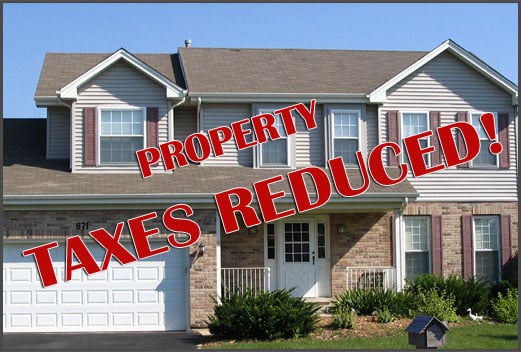There are a lot of misconceptions about the tax grievance process and how it works. Here is some information that will help you to understand the process, and help you to explain to your clients how the process can help you to sell their home faster and potentially for more money.
1. The Assessment

Once the assessor has determined your market value, the assessor then calculates your assessed value, which is a simple mathematical calculation that multiples the market value by a predetermined Uniform Percentage of Value set by the state. The purpose of the Uniform Percentage of Value (“UPV”) is to provide a standardized assessment calculation to ensure that every property receives an equitable assessment. So, for example, if the UPV is 40%, and your market value is $500,000, your assessed value would be $200,000 ($500,000 times 40%). If your neighbor’s home has a market value of $400,000, her assessed value would be $160,000 ($400,000 times 40%).
2. The Assessment Roll
Once the assessor has determined the assessed value of all the properties in a municipality, the assessor’s office will publish what’s called the “roll,” which is a comprehensive listing of all properties, their determined market value, and their assessed value. For most municipalities, the roll is published in the first week of May, a few weeks before grievance applications are due. The purpose of the roll is to provide property owners with fair notice to prepare their grievances once they see the assessor’s determination of their market and assessed value. Again, the roll does not state your property taxes but provides the market value and assessed value upon which your taxes will be based.
3. Researching Grounds for a Grievance
Once we know the market value determined by the assessor, we can help you decide whether you have grounds for filing a complaint about your assessment. Technically, property owners can make four distinct claims for a grievance, including situations where the property is improperly classified (i.e., it’s not commercial property, it’s residential) or exempt from taxation (i.e., it’s a church or school). But the main grievance situation for most homeowners involves the basic complaint that the property is subject to an “Unequal Assessment” because owners of comparable properties have received lower assessments and thus will pay lower taxes.
Essentially, a claim of “Unequal Assessment” boils down to this: we contend that the assessor over-estimated the market value of your property, leading to an inflated assessment value, resulting in your having a higher assessment than other owners of comparable properties. In order to prove that claim, we need to show that the market value of your property is actually lower than the assessor’s determination.
If your review of your property’s market value demonstrates that the assessor’s determination of your market value was too high, then you have solid grounds for filing a grievance petition.
4. Grievance Day
You have to file a complaint grieving your property taxes by the deadline established by your municipality. The deadline is usually a few weeks after the roll is published. On that day, a Board of Assessment Review (“BAR”) will meet to start the process of evaluating all the grievance petitions and will hold an open hearing in which we present your case.
We submit two documents to file a petition to grieve your property taxes. First, the Complaint on Real Property Assessment for (Form RP-524), which is a standard New York State form used to file grievances across the state. The form requires basic information on you, your property, and the nature of your grievance.
Second, we submit a letter in support addressed to the Board of Assessment Review for your municipality, including a brief explanation of why you believe that you are over-assessed. As part of that letter, we attach any documents that support your case, including an appraisal, comparative market analysis, public records, or anything else that would substantiate your claims.
In the petition, we ask for the specific relief you want – a reduction in the market value to the lowest level that you think is justified. We always ask for as much relief as we believe you can possibly get.
We then attend a hearing to state your case.
5. Appeals
If your grievance complaint is not successful, or if we do not win the relief we believe is enough, we then appeal the decision in what’s called a Small Claims Assessment Review (SCAR) or a Supreme Court trial. This takes more time in waiting on a court date to present the facts of the case, but the decision is retroactive to the original filing date.
Conclusion
Hiring a professional to grieve property taxes ensures that a home receives the lowest assessment possible. A lower assessment leads to a lower tax bill. Lowering a home’s property taxes can help you to sell a home faster. Most people would agree that high property taxes can be a major turn off to a prospective buyer. Did you know that lowering a home’s property taxes by just $1,000 a year would allow a buyer to spend as much as $20,000 more on a home?!
Heller & Consultants Tax Grievance does not charge any up-front fees to begin the grievance process. The fee is based on the outcome of the case, whether or not we are successful in reducing the taxes, and by how much. In most cases, it is the new buyer that will pay the fee as they will reap the benefits of the lower taxes. The seller begins the process, helps to make the home more attractive to a prospective buyer.


